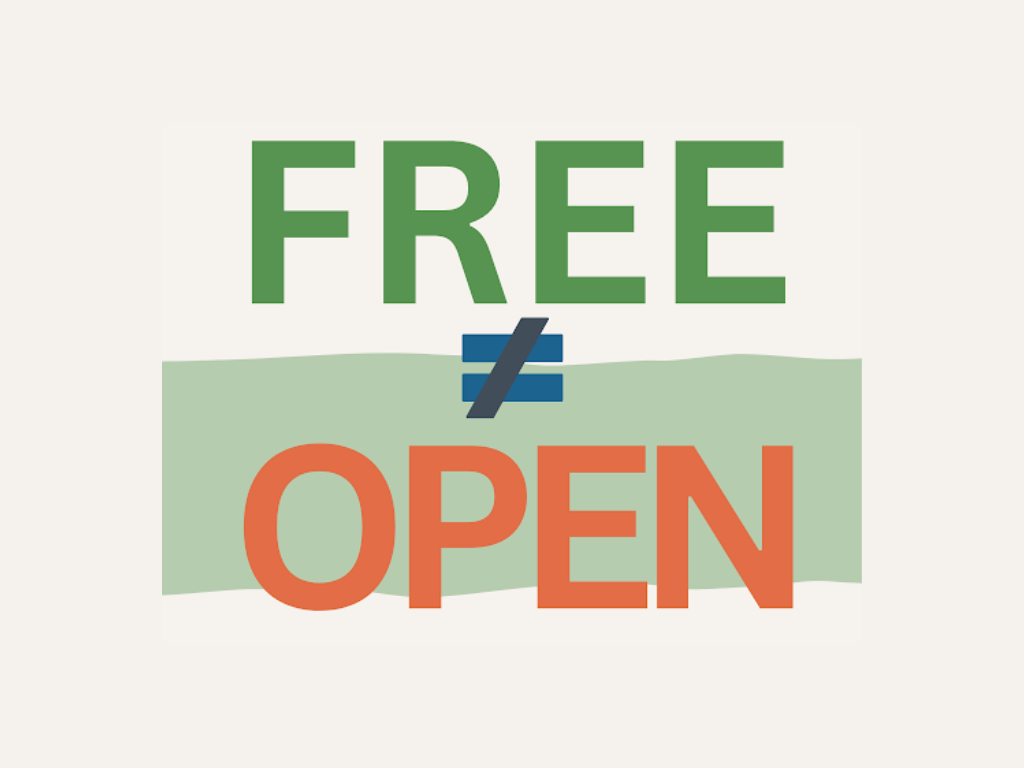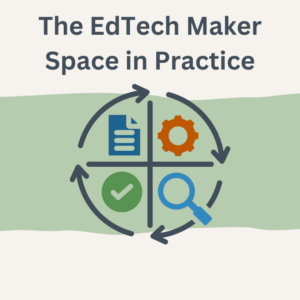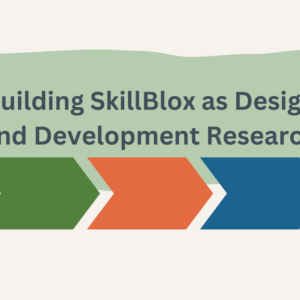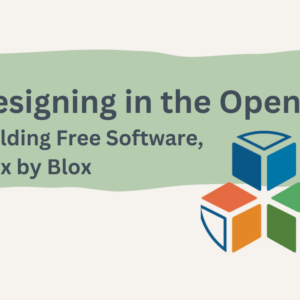
By Jennifer Maddrell, Jen Vanek, and Justine Schade
A focus of our Teaching Skills That Matter-SkillBlox research initiative is to explore how free and open educational resources (OER) can be used and designed to align with the adult education framework called Teaching Skills That Matter (TSTM). Early adopters of TSTM have indicated that finding sufficient direct-to-learner content has been challenging.
A need for quality, affordable, and relevant educational resources is nothing new in our field. At the onset of the pandemic, a time when programs were rushing to fill a gap in the adoption of digital learning materials, a survey revealed that fewer than 10 percent of adult education programs relied on online curricula created by a publisher or software developer.
An earlier report by Newman et al. (2015) found that 90 percent of adult education programs used free and open educational resources because they lacked funds to use commercial products. However, most OER were not created for use in adult education. The report included a call to action to curate relevant OER and expand adoption and use through educator communities of practice. The EdTech Maker Space (ETMS) service-learning workshops, which we lead as part of our TSTM-SkillBlox research initiative, respond to this call for action by working with teachers to expand their knowledge and skills as they organize, adapt, and create free and open resources for adult education.
What makes an educational resource “open”?
Unlike commercial instructional materials, OER are available to others without charge. However, not all free resources are truly “open” for use by others. Instead, content creators make decisions that impact the extent to which the resource is actually open, including: (1) the work’s license, (2) the use permissions granted by the copyright holder, and (3) the technology choices used to create the resource.
Let’s consider how these choices by the resource creator impact openness:
- Open License: Copyright owners can extend access to their intellectual property by utilizing various open licenses framed by Creating Commons by attribution, remix, and distribution requirements. As defined by Creative Commons, an open educational resource (OER) includes “teaching, learning, and research materials that reside in the public domain or have been released under an open license that permits their free use and re-purposing by others.”
- Use Permissions: David Wiley refined the definition of “open” to clarify the spectrum of permissions the copyright holder can grant within the open license to impact the degree of openness. The “5Rs” of permissions can be expressed in various combinations within an open license; they clarify a user’s right to retain, revise, remix, reuse, and redistribute the work.
- Technology Choices: David Wiley also developed the ALMS Framework to illustrate how the creator’s technology choices can impact the degree of openness. Considerations within the ALMS framework include:
- (A) Access to Editing Tools: Is the content published in a format that others can revise using readily available tools?
- (L) Level of Required Expertise: Would editing the shared content by future users require significant technical expertise?
- (M) Meaningfully Editable: Can the content be edited?
- (S) Self-Sourced: Can others access and/or edit the source file?
Why do we need a new effort to help educators find, use, and create OER?
Free is awesome! The openness to use the resource as you choose is even better. So, why isn’t every educator on board with creating and adopting OER?
This question has plagued OER advocates for decades. As laid out in 2002 by UNESCO in an early OER roadmap, the goal has always been free and open access to educational resources for diverse communities of learning, and provisions for adaptation and use via technology. However, reviews of OER practices and use across learning contexts reveal significant barriers to achieving that goal (Blankstein, 2022; Seaman & Seaman, 2022, 2022; Wiley et al., 2014), including the following:
- Discovery: Free and open educational resources are now abundant on the internet. Unfortunately, this abundance can make it harder for educators to find relevant resources for their target learner audience, learning context, and subject matter.
- Quality: Anyone can create OER, and it is challenging for educators to evaluate which free and open resources are credible and of high quality.
- Remix: As noted above, the creator’s license and technology choices can significantly hamper a user’s ability to reuse the resource for different purposes, contexts, and audiences.
- Localization: Free and open resources are typically designed for a particular learner audience and context and often don’t work for diverse audiences.
- Educator Incentives, Preferences, and Knowledge: While educators in some settings may be encouraged to adopt OER, rarely are they paid or otherwise rewarded for their efforts to curate, adapt, or create OER. Others don’t know how to effectively and efficiently integrate them into their teaching practice.
- Sustainability: A practical implication of OER creation and use is the need for places to store and share resources. Unfortunately, maintaining repositories of free resources for others to find and use is NOT free. While government and philanthropic organizations have long funded projects to create OER platforms, self-sustaining funding of these efforts remains a significant challenge.
We are committed to tackling these challenges within our TSTM-SkillBlox ETMS experiences just as we have in our prior Maker Spaces where we developed OER in several content areas (e.g., ESOL, math, digital literacy). We consistently engage 30-40 teachers in each ETMS and we’re fortunate to have repeat attendees! Our current ETMS efforts will support adult educators who wish to integrate TSTM skills into the instruction of highly relevant subject areas (e.g., health literacy, financial literacy, civics education) for which instructional resources are greatly needed. Keep an eye out for the OER our Makers are curating and creating, which will be available to the field some time in 2023.
References
Blankstein, M. (2022). Ithaka S+R US Faculty Survey 2021. Ithaka S+R. https://doi.org/10.18665/sr.316896
Seaman, J. E., & Seaman, J. (2022). Turning point for digital curricula: Educational resources in U.S. higher education, 2022. In Bay View Analytics. Bay View Analytics. https://eric.ed.gov/?id=ED622348
Wiley, D., Bliss, T. J., & McEwen, M. (2014). Open educational resources: A review of the literature. In J. M. Spector, M. D. Merrill, J. Elen, & M. J. Bishop (Eds.), Handbook of Research on Educational Communications and Technology (pp. 781–789). Springer. https://doi.org/10.1007/978-1-4614-3185-5_63




